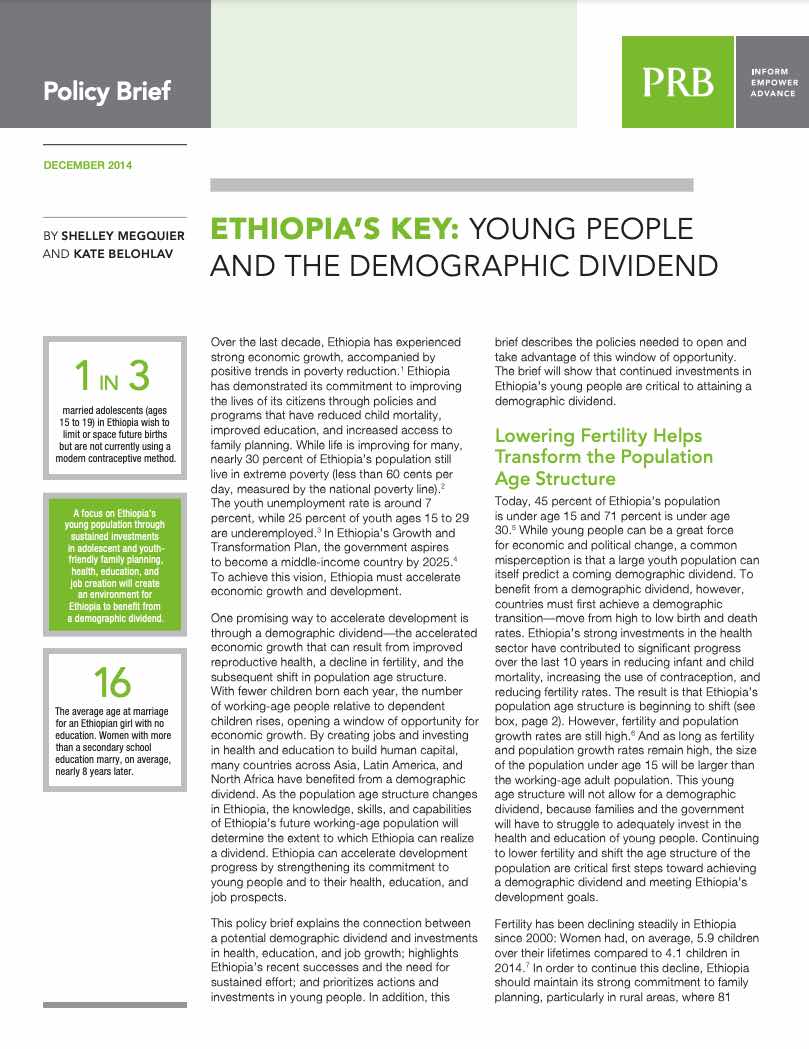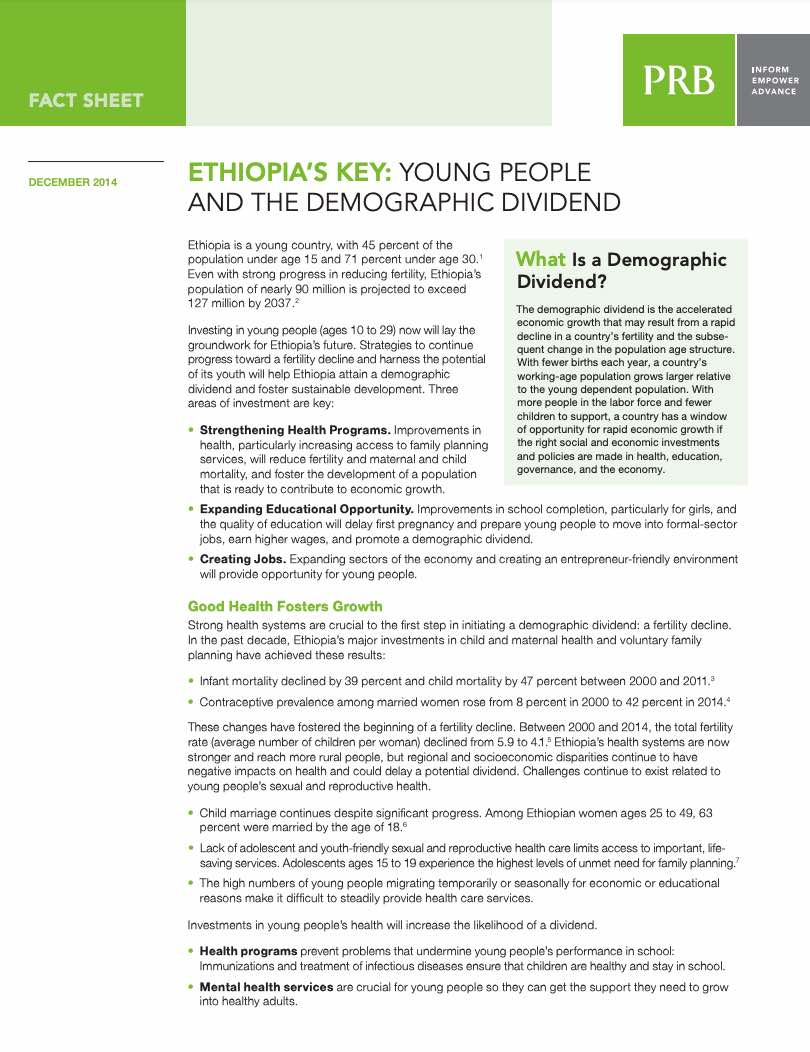
Ethiopia's Key: Young People and the Demographic Dividend
(January 2015) Over the last decade, Ethiopia has experienced strong economic growth, accompanied by positive trends in poverty reduction. Ethiopia has demonstrated its commitment to improving the lives of its citizens through policies and programs that have reduced child mortality, improved education, and increased access to family planning. While life is improving for many, nearly 30 percent of Ethiopia’s population still live in extreme poverty and the youth unemployment rate is around 7 percent, while 25 percent of youth ages 15 to 29 are underemployed. In Ethiopia’s Growth and Transformation Plan, the government aspires to become a middle-income country by 2025.
To achieve this vision, Ethiopia must accelerate economic growth and development. One promising way to accelerate development is through a demographic dividend—the accelerated economic growth that can result from improved reproductive health, a decline in fertility, and the subsequent shift in population age structure. With fewer children born each year, the number of working-age people relative to dependent children rises, opening a window of opportunity for economic growth. By creating jobs and investing in health and education to build human capital, many countries across Asia, Latin America, and North Africa have benefited from a demographic dividend.
As the population age structure changes in Ethiopia, the knowledge, skills, and capabilities of Ethiopia’s future working-age population will determine the extent to which Ethiopia can realize a dividend. Ethiopia can accelerate development progress by strengthening its commitment to young people and to their health, education, and job prospects.
This policy brief and accompanying fact sheet explain the connection between a potential demographic dividend and investments in health, education, and job growth; highlight Ethiopia’s recent successes and the need for sustained effort; and prioritize actions and investments in young people. In addition, this brief describes the policies needed to open and take advantage of this window of opportunity. The brief will show that continued investments in Ethiopia’s young people are critical to attaining a demographic dividend.

 ">
">
 ">
">